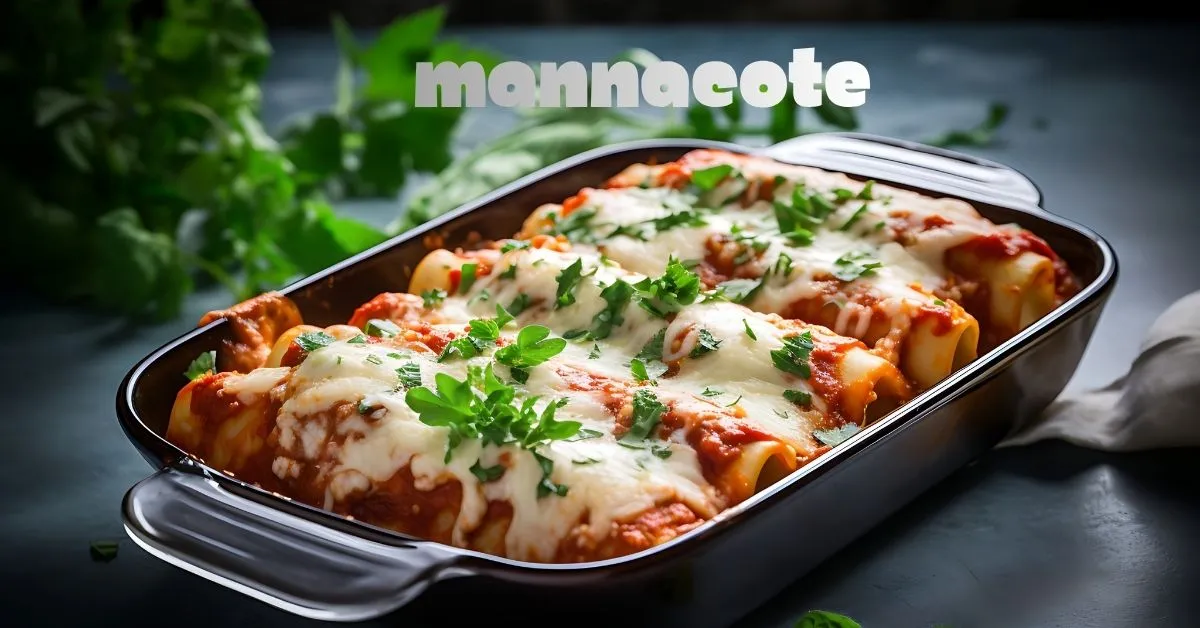If you’ve been looking for a sustainable way to nourish your plants while supporting a healthier environment — and even improving your own well-being — then Mannacote might just be what you’ve been searching for.
This innovative natural fertilizer has become a favorite among gardeners, organic farmers, and eco-conscious households. Unlike synthetic fertilizers that promise quick fixes but harm the soil long-term, Mannacote works in harmony with nature. It feeds your plants gradually, strengthens soil health, and encourages balanced growth.
But the story doesn’t end there — the ripple effects of using Mannacote go beyond your garden. By growing nutrient-rich, chemical-free crops, you’re also cultivating a healthier lifestyle. In this article, we’ll explore what Mannacote is, how it works, its benefits for plants, people, and the planet, and how you can make it part of your gardening routine.
What Is Mannacote?
At its core, Mannacote is a natural, slow-release fertilizer made from organic and mineral-based materials. It was developed as an eco-friendly alternative to traditional synthetic fertilizers, which often deliver nutrients too quickly, causing soil damage and nutrient leaching.
The beauty of Mannacote lies in its encapsulation technology. Each nutrient is coated in a biodegradable layer that breaks down over time, releasing essential elements like nitrogen, phosphorus, potassium, and trace minerals in a controlled manner. This slow and steady nourishment helps plants grow stronger roots, greener leaves, and more vibrant fruits or flowers — all while reducing waste and runoff.
In simpler terms: Mannacote gives your plants exactly what they need, when they need it.
The Science Behind Mannacote:
You might be wondering — what makes Mannacote different from the regular fertilizers you see on store shelves?
It all comes down to smart nutrient release and soil synergy.
Controlled Nutrient Delivery
Unlike chemical fertilizers that flood the soil with nutrients all at once, Mannacote’s coating technology ensures nutrients are released gradually. This prevents “nutrient shock,” where plants receive too much too fast, leading to weak root systems or even fertilizer burn.
Organic Composition
Mannacote is packed with natural materials such as humic acid, organic carbon, and beneficial microbes. These ingredients work together to:
- Improve soil aeration and texture
- Boost microbial activity
- Increase nutrient retention
- Enhance water absorption
When your soil thrives, your plants thrive too.
Environmental Balance
The slow-release mechanism also minimizes leaching — the loss of nutrients that often wash away into rivers and groundwater. This not only protects aquatic life but also ensures your fertilizer investment stays in the soil where it belongs.
Long-Term Soil Health
Over time, Mannacote strengthens the soil’s natural ecosystem. It doesn’t just feed the plants; it rebuilds soil fertility. This is why many gardeners say their soil gets “better with age” after consistent Mannacote use.
Health Benefits:
It may surprise you to learn that using Mannacote can positively influence your own health too. How?
Because the quality of your food starts in the soil.
When plants absorb balanced nutrients from organic fertilizers, they produce fruits and vegetables richer in vitamins, minerals, and antioxidants. For instance, crops grown with Mannacote often show:
- Higher levels of Vitamin C and beta-carotene
- More natural sweetness and flavor
- Better shelf life due to stronger cellular structure
By reducing reliance on chemical fertilizers, you also lower your exposure to harmful residues and toxins commonly found in conventionally grown produce.
Plus, tending to a natural, chemical-free garden has proven mental health benefits. Studies show that organic gardening reduces stress, improves mood, and increases physical activity — all contributing to overall well-being.
Environmental Benefits:
Mannacote isn’t just good for plants — it’s good for the planet. Here’s how it supports environmental sustainability:
Reduces Chemical Dependency
Synthetic fertilizers may deliver fast results, but they also degrade soil health and pollute waterways. Mannacote eliminates the need for those harsh chemicals, helping you maintain fertile soil naturally.
Protects Water Sources
Because it releases nutrients slowly, Mannacote drastically reduces nutrient runoff — a major cause of water pollution and algae blooms. Your choice to use natural fertilizers directly contributes to cleaner rivers and lakes.
Supports Biodiversity
Healthy, chemical-free soil attracts beneficial insects like bees, butterflies, and earthworms. These creatures help pollinate crops and improve soil aeration, creating a balanced, thriving garden ecosystem.
Promotes Carbon Sequestration
Organic fertilizers like Mannacote improve carbon storage in the soil. This process, known as carbon sequestration, helps combat climate change by capturing CO₂ and locking it into the ground instead of the atmosphere.
By switching to Mannacote, you’re joining a global movement toward regenerative agriculture — a system that gives back to nature instead of taking from it.
How to Use Mannacote in Your Garden
One of the best things about Mannacote is its simplicity. Whether you’re growing houseplants, vegetables, or fruit trees, using it correctly is easy and effective.
Determine Plant Needs
Different plants require different nutrient levels. Mannacote comes in several formulations (e.g., for seedlings, flowering plants, or crops). Choose the right type based on your garden’s stage.
Apply the Fertilizer
You can apply Mannacote in a few ways:
- Before planting: Mix it directly into the soil to prepare the bed.
- For established plants: Sprinkle it around the base and lightly mix it into the topsoil.
- For pots and containers: Add a small amount on top and water thoroughly.
Water and Activate
After applying, water your plants to start the nutrient release process. The moisture helps break down the outer coating and activates microbial activity.
Frequency
Because it’s a slow-release fertilizer, you’ll typically need to reapply only every 3–6 months, depending on plant type and growing conditions.
Storage
Keep Mannacote in a cool, dry place to maintain its effectiveness. Avoid exposure to moisture until you’re ready to use it.
Where to Buy Mannacote
You can find Mannacote at most garden centers and organic farming supply stores. It’s also widely available through online retailers and eco-focused e-commerce platforms.
If you’re growing on a larger scale, agricultural suppliers often offer Mannacote in bulk bags or specialized blends for specific crops like rice, corn, or fruit orchards.
When purchasing, look for certified organic-grade labels to ensure you’re getting the authentic formulation.
Real-Life Success Stories
Thousands of gardeners and farmers worldwide have shared their Mannacote experiences — and the results are inspiring.
- A home gardener in Australia reported her vegetable garden doubled its yield after one season of Mannacote use. “My tomatoes taste sweeter, and my lettuce stays crisp for days,” she said.
- A small farmer in Kenya noticed healthier maize crops and fewer pest issues. “I was spending less on pesticides because the plants became naturally stronger.”
- An urban gardener in the U.S. transformed a balcony full of wilting flowers into a lush green haven within weeks. “It’s like my plants finally found their rhythm,” she shared.
These testimonials highlight what many already believe — Mannacote isn’t just a fertilizer; it’s a complete gardening philosophy built on harmony between people, plants, and the planet.
Comparing Mannacote to Other Fertilizers
| Feature | Mannacote | Synthetic Fertilizers | Compost/Manure |
| Nutrient Release | Slow and steady | Fast, often excessive | Variable |
| Soil Health | Improves over time | Degrades long-term | Builds slowly |
| Environmental Impact | Eco-friendly | Polluting runoff | Minimal |
| Ease of Use | Simple, clean application | Easy but harmful | Requires preparation |
| Cost Efficiency | Long-lasting, minimal waste | Frequent reapplication | Low cost but inconsistent |
As you can see, Mannacote provides a balance between scientific innovation and natural effectiveness, giving gardeners the best of both worlds.
Conclusion:
Mannacote isn’t just a fertilizer — it’s a movement toward sustainable gardening. It bridges the gap between nature and science, helping you grow healthier plants, protect the environment, and nourish yourself with cleaner, more nutritious food.
By choosing Mannacote, you’re saying yes to:
- Stronger plants and richer soil
- Fewer chemicals and less pollution
- A greener, more balanced world
Whether you’re a home gardener, farmer, or simply someone who wants to live closer to nature, Mannacote offers the perfect starting point.
FAQs
1. Is Mannacote safe for edible plants?
Absolutely! Mannacote is organic and toxin-free, making it ideal for growing vegetables, herbs, and fruits you plan to eat.
2. How often should I apply Mannacote?
Typically every 3 to 6 months. Because it releases nutrients slowly, it keeps feeding your plants for weeks without frequent reapplication.
3. Can Mannacote replace compost?
Mannacote complements compost beautifully. Compost enriches soil biologically, while Mannacote ensures steady nutrient availability — together, they create the perfect growing environment.
4. Does Mannacote work for indoor plants?
Yes! Houseplants benefit greatly from its balanced nutrition. Just use smaller quantities and ensure regular watering.
5. What results should I expect?
You’ll notice healthier, more vibrant plants, improved soil texture, and better yields within a few weeks to months of consistent use.

